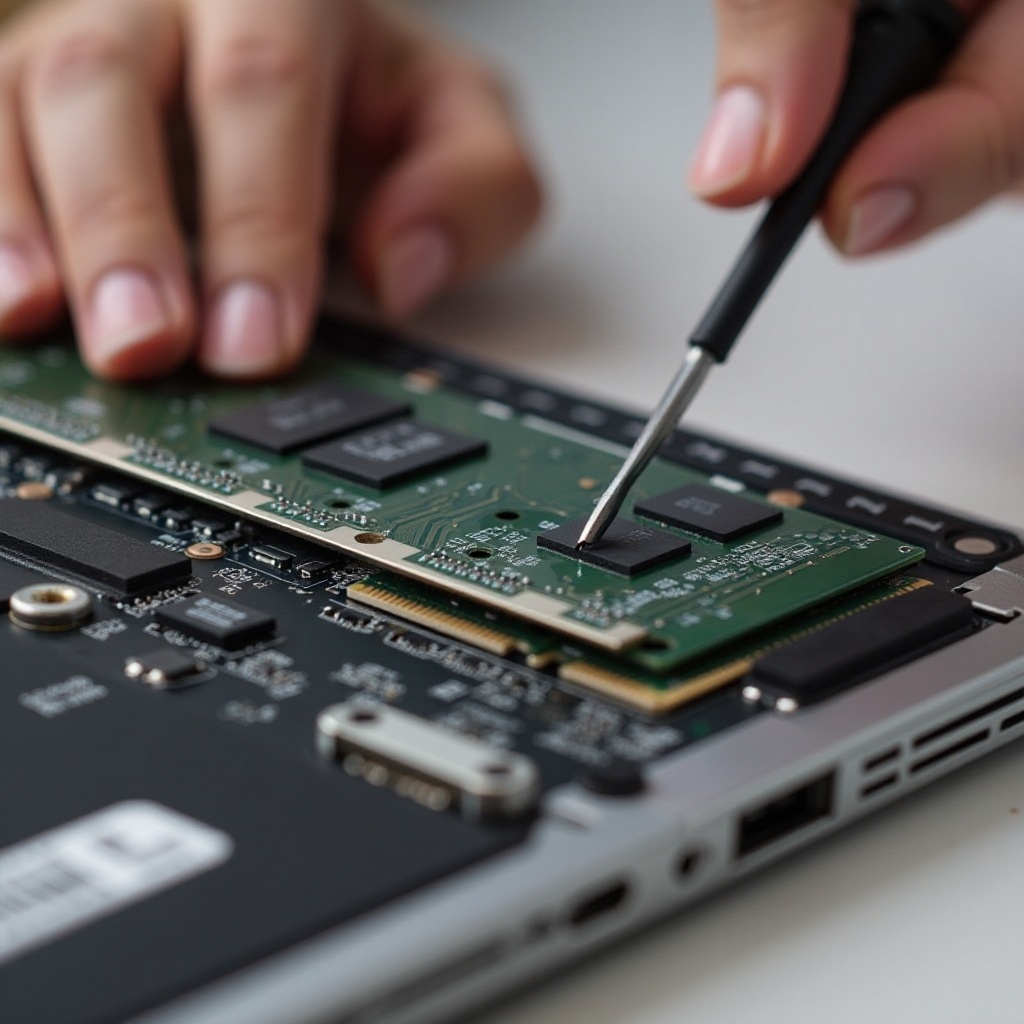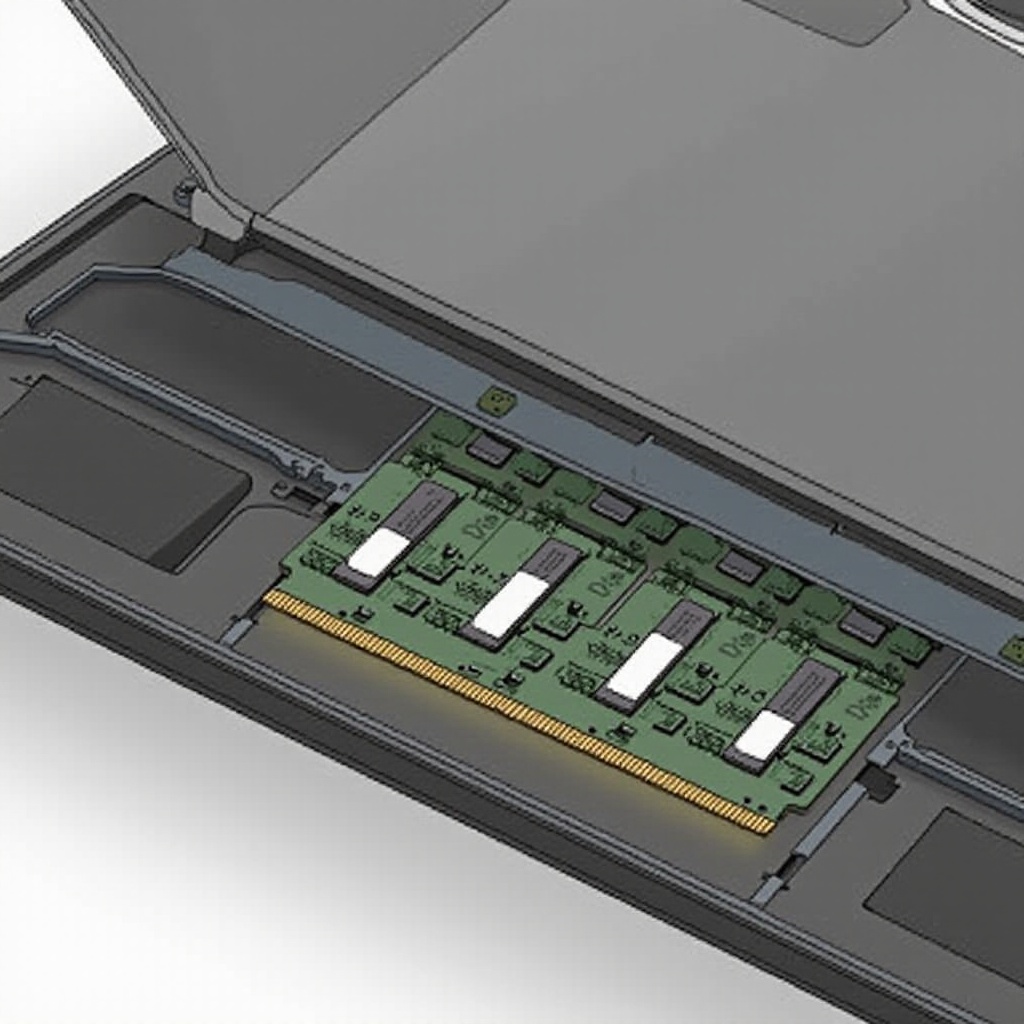Introduction
Laptops, despite their sleek designs, often come with limitations regarding memory upgrades. However, adding more RAM is an effective way to significantly enhance a laptop’s performance. This enhancement allows for smoother multitasking and can greatly improve the speed of program execution. Whether your laptop is slowing down with modern applications or you’re aiming to future-proof the device, knowing how to add RAM is a crucial skill. This comprehensive guide will walk you through the entire process, from understanding RAM’s role to successfully installing it.

Understanding RAM and Its Importance
RAM, or Random Access Memory, serves as the temporary storage space for data that your computer requires instantly. It is essential for the speed and efficiency of your laptop. Having more RAM allows multiple applications to run simultaneously without causing the system to lag. Think of RAM as your workspace: the larger it is, the more tasks you can manage effectively at the same time. Upgrading your RAM is often the key to unlocking your laptop’s full potential, especially when dealing with resource-intensive applications.
Checking Laptop Compatibility for RAM Upgrades
Before buying new RAM, ensure your laptop supports the upgrade. Begin by consulting your laptop’s manual or the manufacturer’s website for details on maximum RAM capacity and available slots. Most laptops have a limit on how much RAM can be installed, and understanding whether your motherboard is compatible with the RAM you intend to install is crucial. Additionally, determining if your current RAM configuration is a single or dual setup will influence your choice of new RAM modules.

Choosing the Right RAM for Your Laptop
Once compatibility is confirmed, selecting the right type and amount of RAM is critical. RAM types vary, such as DDR2, DDR3, or DDR4, with DDR4 being the latest as of 2024. It’s important to match the RAM type with what your laptop supports. Additionally, consider the RAM’s speed, expressed in MHz, and how it complements your laptop’s processor speed. For most users, 8GB suffices, but 16GB is recommended for tasks like video editing or gaming.
Preparing Your Laptop for Installation
Preparing your laptop properly before RAM installation is crucial for a smooth process. Start by turning off your laptop and disconnecting it from any power sources. Then, if possible, remove the battery to prevent electrical shocks and protect your hardware. Ensure you have necessary tools ready, such as a small screwdriver, and work in a static-free environment to avoid damaging sensitive components.
Step-by-Step Guide to Installing RAM
Installing RAM can be straightforward if followed step by step:
-
Access the RAM Slot: Most laptops have a dedicated compartment for RAM, secured by screws. Use a screwdriver to remove these screws and gently detach the panel.
-
Remove Existing RAM (if necessary): To replace old RAM, spread the retention clips to free the old module from the slot.
-
Insert New RAM: Align the notch on the RAM module with the slot on the motherboard at a 45-degree angle. Gently press it down until you hear a click, signifying that it’s securely in place.
-
Reassemble the Laptop: After installation, reattach the panel, ensuring all screws are tightly fastened. Reinsert the battery if needed and reconnect the power supply.
These steps will guide you in seamlessly installing new RAM.

Verifying Successful RAM Installation
After installation, power on your laptop to confirm everything is functioning correctly. Access system properties through the control panel or system preferences to verify if the new RAM is recognized and operational. If the total RAM displayed matches what you installed, you’ve successfully upgraded it!
Troubleshooting Common RAM Installation Issues
Occasionally, post-installation issues may arise, such as the laptop not recognizing the new RAM. First, double-check compatibility with your laptop. If confirmed, reseat the RAM module to ensure it has a proper connection. Test each slot by inserting the RAM separately to identify any potential faults in individual slots.
Conclusion
Upgrading your laptop’s RAM is a cost-effective way to enhance its performance, leading to increased productivity and a smoother computing experience. By following these steps, your laptop can run multiple applications efficiently and manage more data simultaneously. Embrace this process with confidence, as a bit of effort can dramatically improve your laptop’s capabilities.
Frequently Asked Questions
How do I know if my laptop needs more RAM?
If your laptop frequently slows down or struggles to run multiple programs, it might need more RAM. Reduced performance with demanding software indicates an upgrade could be beneficial.
Can I add RAM to any laptop model in 2024?
Not all laptops allow for RAM upgrades, especially ultra-thin models. Always check your model’s specifications before purchase. Some laptops have soldered RAM, making upgrades impossible.
What should I do if my laptop doesn’t recognize the new RAM?
If your laptop doesn’t recognize new RAM, ensure it’s seated correctly and compatible with your model. Verify each module separately to check for slot issues, and consult the manufacturer’s manual for further guidance.

